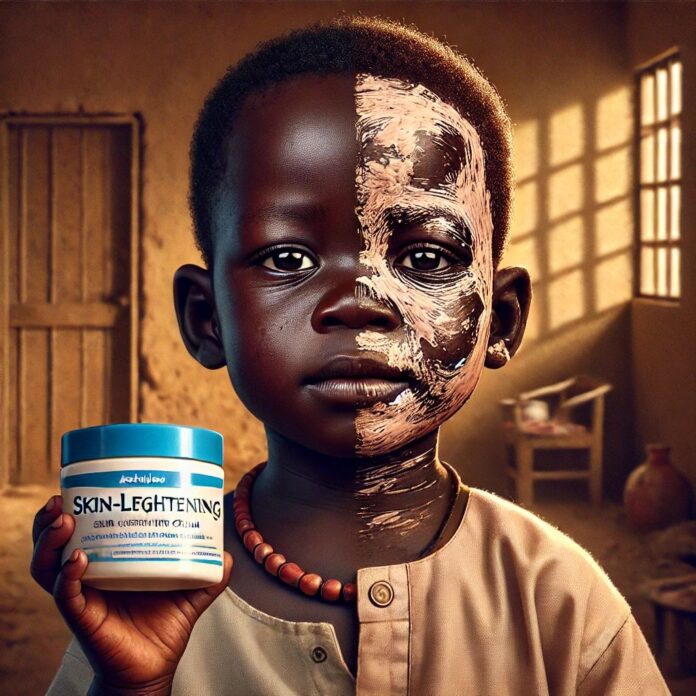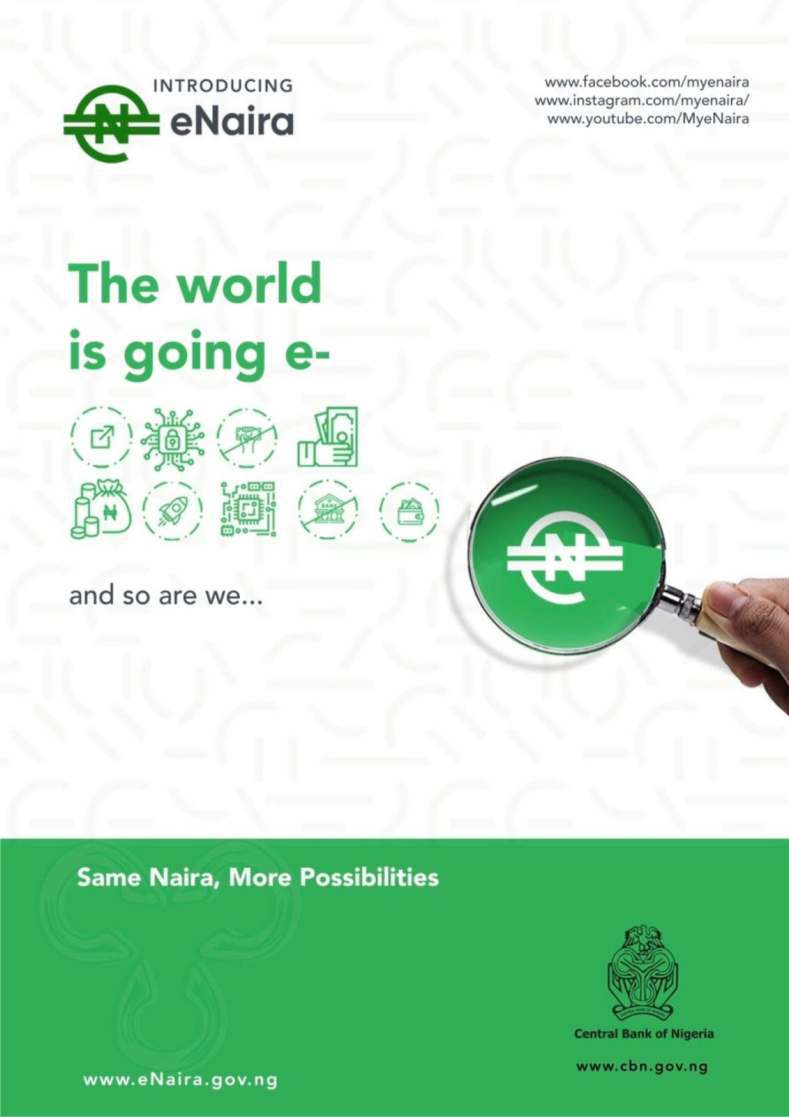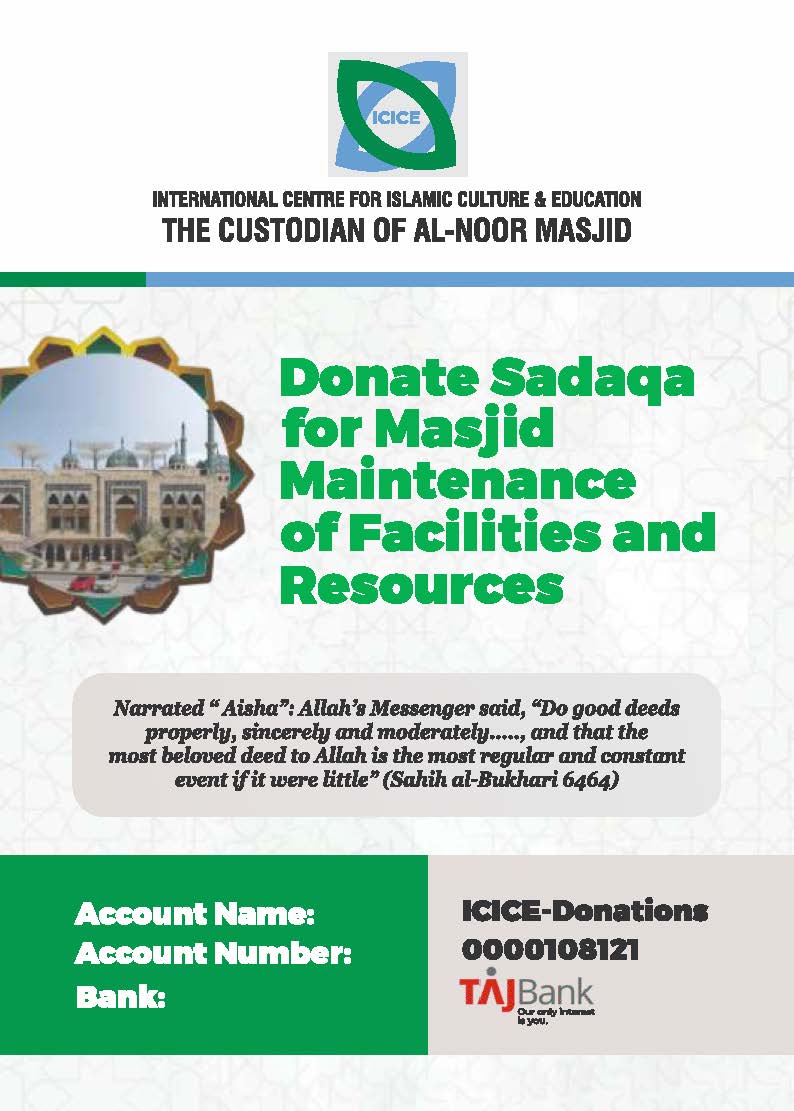By Hauwau Shehu Maikeffi
“My mother, their grandmother refused to carry them. She’d carry my sister’s children, laugh with them, spoil them… but mine? She would flinch. Because they were darker. Because they didn’t ‘glow.’ So, I bleached them. Now, she carries them too.”
That’s the voice of a woman in Kano State, Northern Nigeria, a mother who, out of rejection, internalized colorism so deeply that she began bleaching the skin of her two toddlers. Their grandmother, her own mother had made no secret of her preference for “fairer” grandchildren, and the pressure became unbearable. She turned to what seemed like the only “solution”: lighten their skin. Make them more lovable. More acceptable.
But what is the cost of acceptance when it comes soaked in chemicals?
Today, her children carry not just lighter skin, but peeling wounds, patchy burns, and a lifetime of potential health consequences. Still, she says, “At least now, their grandmother carries them.”
Skin bleaching is not new to Nigeria, or Africa at large. In fact, the World Health Organization (WHO) estimates that over 77% of Nigerian women use skin-lightening products. Across the continent, the numbers hover around 60-70% in certain regions. But what’s new and dangerously disturbing is that this toxic culture has now reached children.
In towns and cities across Northern Nigeria, especially in Kano, an alarming number of mothers are applying bleaching creams on children as young as six months old. These are not isolated incidents. This is not rumor. This is a growing, painful reality one that’s slowly becoming normalized in markets, salons, and households.
“She said kojic acid is natural”
Bleaching products, often masked as “toning creams” or “glow oils,” contain potent chemical agents such as hydroquinone, mercury, kojic acid, glutathione, and steroids.
Some of these, like kojic acid, are permitted for clinical dermatological use at concentrations below 1%, usually around 0.2% to 0.5%, and only under strict medical supervision for short-term treatments. Even at those levels, side effects can include irritation, redness, and increased sensitivity to UV rays. But what happens when unregulated versions are sold in open markets with concentrations up to 4% or higher, often mixed with steroids and mercury? And worse, used on fragile, developing skin?
The National Agency for Food and Drug Administration and Control (NAFDAC) has banned several products containing these agents. Yet, walk into any local cosmetic store in Kano, and you’ll find rows of them—no prescriptions, no warnings, no regulations. Sellers often have zero training, no understanding of dermatological health, and no idea of the long-term implications of what they sell. They are not licensed cosmetologists. They are traders chasing demand—and the demand is booming.
In one encounter, a seller was asked if he was aware that the ingredients in his products had been banned by NAFDAC. He laughed and said, “I didn’t know. But now that you tell me, I will think about it.” That was the end of the conversation. That, in essence, is the terrifying reality.
Why Are Mothers Doing This?
Colorism runs deep in the veins of society. Fairness is still wrongly associated with beauty, class, marriageability, and even intelligence. Mothers are often victims themselves, having grown up hearing that lighter skin is better. So, when a mother sees her dark-skinned child being rejected, even subtly, she panics. She intervenes with bleach.
In Northern Nigeria, these pressures are magnified by intergenerational beliefs, cultural preferences, social expectations, and poverty. Mothers do not always see what they’re doing as harmful. They see it as “fixing.” As giving their children a better chance at life.
But at what cost?
The pediatric implications of skin bleaching are horrifying. Children’s skin is thinner and more permeable, making them more susceptible to toxicity and chemical burns. Prolonged exposure to hydroquinone or steroids can lead to:
• Skin thinning
• Steroid-induced eczema or acne
• Delayed wound healing
• Chronic kidney damage
• Hormonal disruption
• Increased risk of skin cancer
Worse, the psychological damage begins early. A child who is told, directly or indirectly, that they are more lovable when lighter, grows up questioning their identity, their beauty, and their worth.
The real question is: Where are the systems of accountability?
Why are banned products so freely sold?
Why are there no grassroots education campaigns to help mothers understand the dangers of bleaching?
Why are there no safeguards for children, who have no say in how their skin is treated?
Is the silence from regulatory bodies due to ignorance, or apathy?
If the average mother in Kano can bleach her child with products she bought on the roadside, then we have failed on every level from public health to policy, from awareness to enforcement.
This Isn’t Just a Story. It’s a Crisis.
This is more than skin. This is about shame. About acceptance. About how centuries of colonial mentality still echo in the choices made in marketplaces and homes today.
This is about children who will grow up with scars some visible, some buried in the layers of their self-esteem. And unless we talk, act, educate, regulate, and challenge this toxic culture, those scars will multiply.
We cannot afford to be silent.










